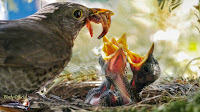I had a recurring dream through high school. I would walk into my first class of the
morning, sit down, and immediately be told ‘the test’ was about to start. What test?
I haven’t studied for it! Then I
noticed my feet were cold because I wasn’t wearing shoes. Oh, and I had forgotten to put on clothes. And everyone was pointing and laughing. I dealt with that nightmare by always verifying
I had on clothing before I walked out the door.
For the past eight years, I’ve had a different kind of
nightmare. In this one, I walk into a
room and everyone is waiting for me to talk.
Except I can’t find my computer with the program on it. And my projector’s bulb has died. And the cables to connect the two aren’t there. And everyone is drumming their fingers,
waiting for me to begin because I’m also half an hour late. To prevent that nightmare from coming true, I
approach every presentation with a set of preparations that Betty says has more
checklist items than packing for a two-week vacation.
 |
| Dan Jaffe in his natural element |
Last night, I accompanied Betty to a meeting of the Norwood
Evening Garden Club where a terrific horticulturalist named Dan Jaffe was scheduled to hold forth on
the subject of native plants. Dan has a
file-folder-full of programs with names like ‘Kill Your Lawn!’. To his acolytes, it doesn’t matter which program
he is doing because they’re all endlessly fascinating and jammed full of
information encapsulated in humorous anecdotes.
Dan arrived a few minutes before 7 p.m. for a 7:30 presentation.
The venue was the meeting hall of a vintage-early-20th
Century church and a screen was already in place. As the club held its business meeting, I
could sense an animated conversation going on in one corner. Dan’s laptop computer was open, but I didn’t
see a projector. Several minutes later,
a projector appeared. His back was to
me, but I sensed all was not well. A
second laptop appeared. A member of the
garden club with apparent technical skills began working with the second computer
– probably her own – and two cell phones.
All I could see was a screen that kept saying ‘no internet connection available’.
 |
| Dan's book... |
The business meeting ended and all eyes fell on
Dan. He told the group, as the dragooned
IT specialist’s fingers flew across the keyboard, “If this doesn’t work, we’re
going to have one of the most interesting presentations I’ve ever been part of.”
 |
| For lack of a connector between the old and the new.... |
As he said this, I saw the dreaded ‘no connection’
flash on the screen. As I later learned,
Dan thought the club was supplying a projector, and the club thought Dan was
bringing his own. Dan told me he usually
keeps his projector in his car, but stops doing so during the dead of winter
when sub-freezing temperatures are common.
The projector that showed up – from which good Samaritan, I never
learned – was indeed a digital projector, but one not accepting input from a
now-standard HDMI-format cable. (Part of
my ‘pack everything’ checklist is an octopus of a converter that bridges
incompatible formats. I have never used it myself but once loaned it out for a
state garden club convention.)
Dan could have responded in a number of ways. He could have apologized and said the
presentation would have to be rescheduled.
He could lay responsibility at the foot of the club (I have been in
attendance at such a presentation). But
he did neither. Instead, he asked his audience
– somewhere between 35 and 40 people – to form a circle around him with their
chairs. And, for the next hour, he proceeded
to give his presentation in the round, holding out his laptop for everyone to
see photos of the plants as he discussed them.
 |
| The Norcross Wildlife Center straddles Massachusetts and Connecticut |
The presentation was a wonder. Dan – who is horticulturalist for the
Norcross Wildlife Center, an 8,000 acre preserve in south central Massachusetts set up to protect and propagate
native flora and fauna – knows native plants as few speakers
do. And, he speaks in a conversational
manner that never intimidates.
This talk, perhaps because it was unencumbered by
having to talk to a large screen, was freewheeling, full of anecdotal asides,
and incorporating far more interaction with the audience than in a ‘normal’
presentation (when questions are usually asked at the end). Few speakers of my acquaintance – and I
certainly do not number myself among them – can pull a rabbit out of a hat the
way Dan did at that meeting.
It was, in short, a home run. A master class in how to turn adversity into
an education for everyone attending.
Bravo!







